#Europe EV Battery Market
Text
What Percentage of Cars Sold in 2023 Were Electric?
The automotive industry has been rapidly shifting towards electric vehicles (EVs), driven by increasing environmental concerns, technological advancements, and government incentives. The year 2023 marked a significant milestone in this transition. This transition has raised the question: What Percentage of Cars Sold in 2023 Were Electric? Let’s dive into the data to understand the impact and…

View On WordPress
#automotive industry#automotive trends#battery production#battery technology#car manufacturing#car market trends#car sales 2023#charging infrastructure#charging networks#China EV market#Clean Energy#cobalt#consumer acceptance#electric cars#electric mobility#electric vehicles#environmental awareness#Environmental Impact#Europe EV market#EV adoption#EV incentives#EV maintenance#EV technology#EVs#Ford#future of cars#General Motors#global sales#Government Incentives#green alternatives
2 notes
·
View notes
Link
China exported 593,000 new energy vehicles (NEVs) in the first 11 months of 2022, of which 43.3% came from Tesla China. In particular, in the single month of November 2022, an equivalent of 3.2 billion USD worth of NEVs was exported, up 165% from 2021, in which European countries such as Belgium and the United Kingdom are the largest importers, accounting for nearly 70% of imports. In Europe, one out of every ten NEVs comes from China, according to China Central Television, the national television broadcaster of China(..)
P.S. Legacy automakers, who ignored the technological innovations of 2016, when the first mass-produced electric car was able to travel 300+ miles and China showed the first signs that it would be possible to mass produce much cheaper LFP batteries and correspondingly much, much cheaper electric cars, are now losing European car market’s share and their profit money...Stellantis, VW, Renault and the rest of the old manufacturers have only themselves to blame for their short-sightedness and arrogance against new EV technologies...
#global ev market#ev sales#competition#demise of legacy automakers#demise of big oil#Europe#China#ev adoption#very good news#LFP battery
2 notes
·
View notes
Text
The U.S. Department of Treasury’s gift to electric-vehicle shoppers (and global automakers) for the new year was to make many more EVs and plug-in hybrids eligible for the federal tax subsidy of up to $7,500 — including vehicles built outside North America — as long as drivers lease them or buy used rather than buy new.
EV credits and [rules] took effect Jan. 1.
One category extends the former credit of up to $7,500 for consumers buying new EVs and PHEVs, but it puts new limits on vehicle price and buyer income and will soon add requirements for the sourcing of EV batteries and materials. Additionally, since August [2022], it has required that the vehicles be assembled in North America.
A second is a new credit of up to $4,000 for buyers of used EVs.
A third is a “commercial” credit for businesses acquiring EVs. It offers up to $7,500 for light-duty vehicles (under 14,000 pounds) and up to $40,000 for heavier vehicles. Significantly, the commercial credit does not have the origin, price or other restrictions of the credit for consumer buyers.
On top of all that, the Department of Treasury guidance released at the end of December allows the less restrictive commercial credit to also apply to vehicles leased by consumers; that means most plug-in and fuel-cell EVs currently on the market can qualify, including those built in Europe or Asia. The credit goes to the leasing company — the vehicle owner — but it can be passed to the consumer in the form of lower lease payments.
The new federal rules do not affect state and local subsidies available for EV buyers [which may be able to get you even more savings].
-via Cars.com, January 12, 2023
#evs#electric vehicles#electric cars#ev sales#ev adoption#united states#irs#tax credits#democrats#inflation reduction act#biden administration#used cars#leasing a car#saving money#money#good news#hope
77 notes
·
View notes
Text
On May 14, Washington slapped new tariffs on China in what looks at first glance like the latest round of a familiar trade spat. The White House imposed duties of 25 to 50 percent on a range of industrial, medical, and clean tech goods—including semiconductors, solar cells, batteries, steel, aluminum, graphite, magnets, syringes, and ship-to-shore cranes. Strikingly, the latest measures also include a whopping 100 percent tariff on electric vehicles, effectively shutting the U.S. market to Chinese-made EVs.
Seen from Washington, these measures also look like a political move as U.S. President Joe Biden courts blue-collar voters in industrial swing states such as Michigan and Pennsylvania ahead of the November presidential election. It’s unlikely, however, that Beijing shares this benign interpretation. Seen from China, the tariffs look like a serious escalation of the U.S.-China contest and are probably raising alarm bells. Here’s why.
1. Washington is playing the long game. Stories of how China has become the world leader in EV manufacturing and is flooding the world with cheap vehicles have flourished over recent months. At the global level, there certainly is something to this analysis. Chinese exports of EVs jumped by a whopping 80 percent last year, propelling China to the top of the global ranking of car exporters. Yet this does not apply to the United States, where China supplied just 2 percent of EVs sold last year. (U.S. consumers appear to have a distinct preference for South Korean, Japanese, and European EV imports.) In other words, a 100 percent tariff on a few thousand cars will not hit Chinese firms hard.
A closer look at the list of targeted sectors suggests that batteries, not cars, will be the real pain point for China. The U.S. market is important for Chinese battery firms, which supply around 70 percent of the lithium-ion batteries used in the United States. For China’s battery sector, this means that the impact of the latest U.S. tariffs will likely be huge: The usual rule of thumb is that a 1 percentage point increase in tariffs entails a 2 percent drop in trade. With tariffs rising from 7.5 percent to 25 percent, the rule suggests that Chinese battery firms’ U.S. sales could drop by around one-third—or by $5 billion when one includes the entire battery supply chain. With Chinese battery-makers already seeing their profits plummet amid softening global demand, this is certainly bad news for Beijing.
Crucially, batteries are also an area where the U.S. government is investing huge amounts of public funds, in particular through the Inflation Reduction Act, which seeks to boost U.S. domestic production of clean tech goods. Seen in this light, the latest U.S. tariffs are preemptive measures to protect a nascent clean tech industry and make sure that there is domestic demand for future U.S. production. This suggests that the United States is playing the long game here, with little chance the tariffs will be lifted anytime soon. On the contrary—the U.S. clean tech market could well be closed to Chinese firms from here on out.
2. The White House is trying to force Europe to come on board and impose similar tariffs on China. Biden is probably seeking to score electoral brownie points with a 100 percent tariff on EVs, making former President Donald Trump’s proposal for 60 percent on U.S. imports from China look almost feeble. (Not to be outdone, Trump just announced that he would apply a 200 percent tariff on Chinese-branded cars made in Mexico.) Yet the reality is that Biden’s tariffs will not prove game-changing in the short term: Their implementation will be phased in over two years, and supply chain adjustments typically take time. In short, the measures are unlikely to fuel a U.S. industrial boom in time for the November elections.
What will happen before the election, though, is the conclusion in June or July of the European Union’s ongoing anti-subsidy investigation into China’s EV makers. Rumors abound of a possible tariff of 20 to 30 percent on Chinese EVs. Such a prospect is probably unnerving for Beijing; the EU is the biggest export market for China’s EVs, absorbing around 40 percent of Chinese shipments. The United States hopes that its 100 percent tariff on EVs will compel the EU to not only follow Washington’s example in imposing a tariff on Chinese EVs but perhaps also consider a higher one. This bold strategy could well work. Europe is unlikely to enjoy having its arm twisted by Washington, but the bloc will also worry that Chinese EV makers could double down on their push to dominate the EU market now that they have lost access to the U.S. one.
Chinese EVs look set to be a key topic when G-7 leaders meet for their annual summit in June. The United States will probably try to cajole Germany, which has long been dovish vis à vis China, into supporting sharply higher tariffs. German Chancellor Olaf Scholz has pointed to the fact that European auto manufacturers “sell a great many vehicles that are produced in Europe to China”—hinting at German fears that China could retaliate against EVs and internal combustion engine cars imported from the EU.
3. The tariffs are a serious escalation from Washington’s previous de-risking strategy. In recent years, U.S. de-risking has focused on reducing the United States’ reliance on China for crucial goods and curbing Beijing’s access to dual-use technology in a bid to avoid fueling the country’s military advances. To implement this strategy, Washington has so far relied on two main tools from its economic statecraft kit: financial sanctions (for instance, on firms linked to the People’s Liberation Army) and export controls (notably on semiconductors, which are dual-use goods found in most military equipment).
Washington is slowly realizing that these two tools are imperfect. China’s massive sanctions-proofing efforts mean that sanctions do not always deal a blow to Chinese firms, which may no longer be using the U.S. dollar (China now settles around half of its cross-border trade in renminbi) or Western financial channels such as SWIFT, the global payments system. Washington also understands that export controls on clean tech would not curb China’s ambitions in the field, as Chinese firms already have all the tech they need. This leaves only one option for U.S. economic statecraft: tariffs that leverage one of the country’s greatest economic assets—access to its market.
This is why the latest U.S. tariffs are likely raising red flags in Beijing. The United States is now severing access to its market in clean tech and other areas that China sees as crucial for its plans to become the world’s future economic superpower. If the EU plays ball, this approach would expose a central flaw in Beijing’s industrial strategy: What if the world’s two biggest markets—the United States and the EU—become no-go areas for Chinese firms dependent on exporting their vast production, leaving them with piles of unused goods? Few other markets are available for Chinese clean tech exports—outside Europe, North America, and East Asia, most countries lack the infrastructure for large-scale EV adoption, for example. This prospect may well keep Beijing’s planners up at night, with no easy solution in sight.
The question now is whether and how Beijing will react. Serious retaliation is unlikely, since the United States exports far less to China than vice versa. Given its current economic woes, China also has little interest in further weakening its economy—for example, by imposing export bans on critical raw materials, rare earths, or other crucial goods for Western economies.
As the latest skirmish in the battle for economic dominance between Washington and Beijing, the new U.S. tariffs raise a number of bigger questions: Will Washington succeed in its efforts to create a domestic ecosystem for clean tech? Will the United States and Europe manage to cooperate—or go their own ways in their economic relations with China? Will the United States continue to curb Chinese access to the U.S. market for the purposes of de-risking—and if so, in which sectors? There is probably only one certainty in the U.S.-China economic war: The conflict will continue well after the November elections, whatever their outcome.
12 notes
·
View notes
Text
Excerpt from this story from EcoWatch:
In its new Global EV Outlook 2024, the International Energy Agency (IEA) said electric vehicle (EV) sales will reach 17 million this year — up from 14 million in 2023.
In 2024, EVs are projected to make up roughly one out of nine cars sold in the United States, one in four in Europe and 45 percent of total car sales in China, an IEA press release said.
“Electric cars continue to make progress towards becoming a mass-market product in a larger number of countries,” the report said. “Tight margins, volatile battery metal prices, high inflation, and the phase-out of purchase incentives in some countries have sparked concerns about the industry’s pace of growth, but global sales data remain strong.”
More than one-fifth of cars sold globally in 2024 are predicted to be electric, with growing demand set to substantially reduce oil consumption used for road transportation over the coming decade, the press release said.
The pace of EV sales means road transportation’s oil demand is expected to peak around 2025, according to the IEA report, as Reuters reported.
The report added that around six million barrels of oil per day would be cut from oil demand by 2030, with an 11 million barrel reduction by 2035 if countries meet their stated climate and energy policies.
By 2030, EVs are projected to make up nearly one in five cars on the roads in the U.S. and European Union and one in three in China.
3 notes
·
View notes
Photo




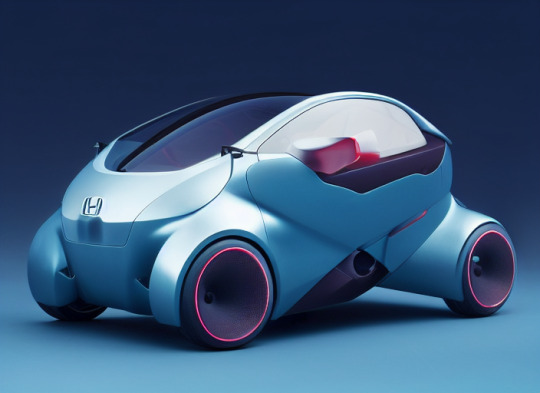
(In order) 1997 Honda Allure Styling Prototype, 1994 Honda UniQ Concept, 1999 Honda Allure (1st Gen), 2002 Honda Allure (Concept), and 2019 Honda Allure (Concept)
Now for the lore:
Honda decided to make a microcar in 1993, produced for Europe and China, as a cheap car for inter-city travel, called the Honda Allure, revealed at the Geneva Motor Show in 1997, the car was prepared for mass production with an option of either a 0.5L gasoline engine, or an electric motor with a range of 80 miles.
The 1994 Honda UniQ was a concept that would eventually evolve into the Allure, though this would be after a decision to shrink the model, from a 1 liter engined, 2+2 seater, to a 2 seater with a 0.5 liter engine, for more likely sales.
In 2002, a preview for the Second Gen Honda Allure was showed off at Geneva again, potentially expanding to the North and South American markets as non-road-legal carts, offered with a 100 mile range electric battery, alternatively a 0.7 liter engine, a revised version of the 0.5 liter engine from the previous generation. It wound up selling ~500,000 units worldwide, from 2004-2009, selling 10% of all units in the United States alone.
In 2009, the Allure was discontinued due to changing safety regulations in Europe, and the North American market dropping off over the course of the 5 year second generation, but in 2019, a third generation was revealed at the New York International Auto Show, to a near-production standard, equipped with a Hydrogen system at the show, which was purely for demonstration, but was to be sold in mass markets as a new EV for Honda to test their mettle on. As of 2023, 500,000 units have been sold, despite the massive issues in production due to the Covid-19 Pandemic, proving even more popular than the originals in North America, and not likely to be replaced in the near future by a next generation.
5 notes
·
View notes
Text
Aluminum Market: Products, Applications & Beyond
Aluminum is a versatile element with several beneficial properties, such as a high strength-to-weight ratio, corrosion resistance, recyclability, electrical & thermal conductivity, longer lifecycle, and non-toxic nature. As a result, it witnesses high demand from industries like automotive & transportation, electronics, building & construction, foil & packaging, and others. The high applicability of the metal is expected to drive the global aluminum market at a CAGR of 5.24% in the forecast period from 2023 to 2030.
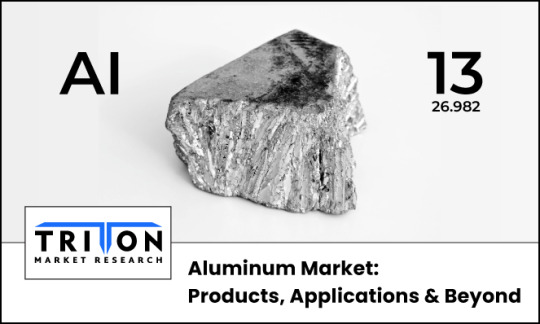
Aluminum – Mining Into Key Products:
Triton Market Research’s report covers bauxite, alumina, primary aluminum, and other products as part of its segment analysis.
Bauxite is anticipated to grow with a CAGR of 5.67% in the product segment over the forecast years.
Bauxite is the primary ore of aluminum. It is a sedimentary rock composed of aluminum-bearing minerals, and is usually mined by surface mining techniques. It is found in several locations across the world, including India, Brazil, Australia, Russia, and China, among others. Australia is the world’s largest bauxite-producing nation, with a production value of over 100 million metric tons in 2022.
Moreover, leading market players Rio Tinto and Alcoa Corporation operate their bauxite mines in the country. These factors are expected to propel Australia’s growth in the Asia-Pacific aluminum market, with an anticipated CAGR of 4.38% over the projected period.
Alumina is expected to grow with a CAGR of 5.42% in the product segment during 2023-2030.
Alumina or aluminum oxide is obtained by chemically processing the bauxite ore using the Bayer process. It possesses excellent dielectric properties, high stiffness & strength, thermal conductivity, wear resistance, and other such favorable characteristics, making it a preferable material for a range of applications.
Hydrolysis of aluminum oxide results in the production of high-purity alumina, a uniform fine powder characterized by a minimum purity level of 99.99%. Its chemical stability, low-temperature sensitivity, and high electrical insulation make HPA an ideal choice for manufacturing LED lights and electric vehicles. The growth of these industries is expected to contribute to the progress of the global HPA market.
EVs Spike Sustainability Trend
As per the estimates from the International Energy Agency, nearly 2 million electric vehicles were sold globally in the first quarter of 2022, with a whopping 75% increase from the preceding year. Aluminum has emerged as the preferred choice for auto manufacturers in this new era of electromobility. Automotive & transportation leads the industry vertical segment in the studied market, garnering $40792.89 million in 2022.
In May 2021, RusAl collaborated with leading rolled aluminum products manufacturer Gränges AB to develop alloys for automotive applications. Automakers are increasingly substituting stainless steel with aluminum in their products owing to the latter’s low weight, higher impact absorption capacity, and better driving range.
Also, electric vehicles have a considerably lower carbon footprint compared to their traditional counterparts. With the growing need for lowering emissions and raising awareness of energy conservation, governments worldwide are encouraging the use of EVs, which is expected to propel the demand for aluminum over the forecast period.
The Netherlands is one of the leading countries in Europe in terms of EV adoption. The Dutch government has set an ambitious goal that only zero-emission passenger cars (such as battery-operated EVs, hydrogen FCEVs, and plug-in hybrid EVs) will be sold in the nation by 2030. Further, according to the Canadian government, the country’s aluminum producers have some of the lowest CO2 footprints in the world.
Alcoa Corporation and Rio Tinto partnered to form ELYSIS, headquartered in Montréal, Canada. In 2021, it successfully produced carbon-free aluminum at its Industrial Research and Development Center in Saguenay. The company is heralding the beginning of a new era for the global aluminum market with its ELYSIS™ technology, which eliminates all direct GHG emissions from the smelting process, and is the first technology ever to emit oxygen as a byproduct.
Wrapping Up
Aluminum is among the most widely used metals in the world today, and is anticipated to underpin the global transition to a low-carbon economy. Moreover, it is 100% recyclable and can retain its properties & quality post the recycling process.
Reprocessing the metal is a more energy-efficient option compared to extracting the element from an ore, causing less environmental damage. As a result, the demand for aluminum in the sustainable energy sector has thus increased. The efforts to combat climate change are thus expected to bolster the aluminum market’s growth over the forecast period.
#Aluminum Market#aluminum#chemicals and materials#specialty chemicals#market research#market research reports#triton market research
4 notes
·
View notes
Photo
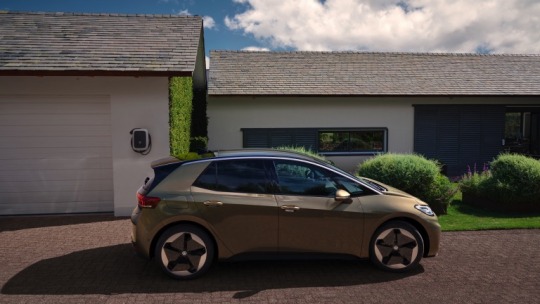
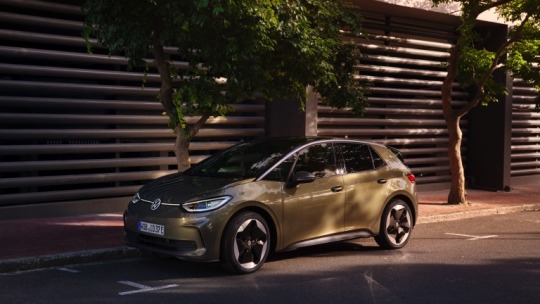
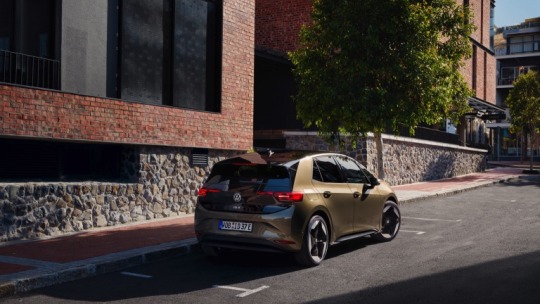
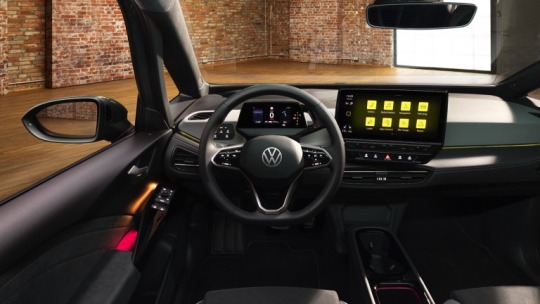

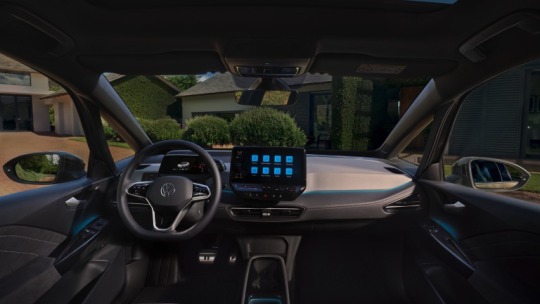
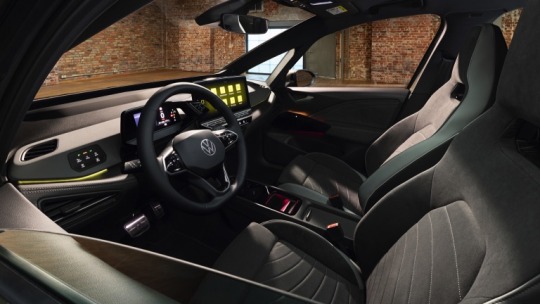
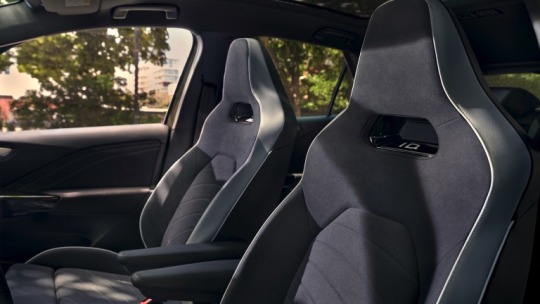
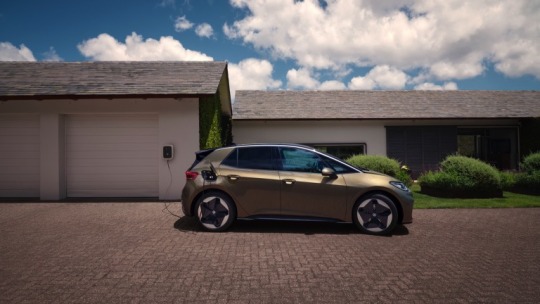
One of the best things about electric cars in 2023 is that we are now seeing 1st generation models from the “early years” being improved, revised and facelifted. For the early-adopters in the UK’s EV market, we are grateful for those consumers and businesses for having the foresight and courage to invest into all-electric technology in 2018 / 2019 / 2020, when little was known on how good this form of transport would be (and when public charging infrastructure was still in its early inception). And VW’s electric Golf replacement, the ID.3, was first shown to the world in 2016 before being pushed into production in 2019 with deliveries taking place around 2020 around Europe (including the UK). As one would expect, the ID3 was fairly popular, amassing some 11,032 registrations in 2021 (it was the 3rd best-selling EV in the UK) followed by becoming the 4th best-selling UK EV with 9,178 registrations in 2022! (see SMMT for more details - https://media.smmt.co.uk/). Launching with a Pure battery (45 kWh), Pro battery (58 kWh) and Pro S configuration (77 kWh), VW’s all-electric hatchback filled a necessary hole in the UK’s automotive market, which was historically dominated by SUVs and luxury / prestige options. Winning awards, like the Which? Best Buy of 2023 (https://www.which.co.uk/reviews/new-and-used-cars/volkswagen-id-3-2020), does prove that this is very much the zero-emission Golf equivalent.
But the “future of driving” is not a completed model and the German group have now confirmed a series of external, integral and technological improvements to this popular EV (see VW - https://www.volkswagen.co.uk/en/electric-and-hybrid/electric-cars/the-new-id3.html). As the “evolution of electric mobility” continues, the brand have confirmed some truly existing updates including:
Exterior - new colours such as Dark Olivine Green, sharper profile at the front together with new tail light clusters and dynamic turn signals plus IQ.Light LED matrix headlights set to be offered. New alloy options including the 19” Wellington and 20” Sanya alloys, a new Exterior Package will allow drivers to add LED matrix headlights with automatic lighting control, LED tail lights, illuminated strip between headlights and tinted rear windows. An Exterior Packages PLUS includes a panoramic roof and sun blind;
Interior - increased options on the dash and door trim, together with higher quality finish. Ability to upgrade to the optional electric seats with massage function and high-quality fabric. New panoramic glass roof with “heavenly views” and sunblind; and
Technology and safety - 8-colour ambient lighting, Travel Assist with adaptive lane guidance and predictive cruise control, Emergency Assist, Area View with 4 cameras, Adaptive Cruise Control, Lane Keeping Assist and Park Assist Plus can all be added to your new ID3.
Not unlike many other brands, the ID.3 will be utilising over-the-air updates for continual improvements coupled with the We Connect ID app for synergising your vehicle to your mobile device. Many EV customers enjoy the facility to start and stop charging, or warm their vehicle, from the comfort of the app.
2 notes
·
View notes
Text
Volvo Backs Down From 2030 All-EV Commitment for Hybrid Approach: Here's What's Coming Now - Notice Global Web
https://www.merchant-business.com/volvo-backs-down-from-2030-all-ev-commitment-for-hybrid-approach-heres-whats-coming-now/?feed_id=206794&_unique_id=66ee834e559d0
It’s been about three years since V...
BLOGGER - #GLOBAL
It’s been about three years since Volvo stated its bold EV goal: By 2030, all of its products worldwide would be battery-electric vehicles (BEVs). At the global reveal of the 2025.5 XC90 (pictured here), sold in mild hybrid (MHEV) and plug-in hybrid (PHEV) versions, Volvo announced that internal combustion engines would still be part of the lineup come 2030 and beyond.“Everybody made a lot of assumptions two, three, four, five years ago, and that’s changed,” Volvo CEO Jim Rowan explained. “The market’s changed. EV subsidies taken away, trade tariffs come in and add on costs. Five years ago you could import a car into the U.S. from China for 2.5 percent. It went to 27.5 percent, it’s now 102.5 percent. We saw the same thing happen in Europe. We saw a slowing demand for EVs. You can either look at all of that stuff and say ‘I’m just going to do the same thing’ or ‘I’m going to pivot’.”This is not to say Volvo will return to non-electrified powerplants. In 2022, Volvo spun off its internal-combustion development and production to a new company called Aurobay, a joint venture with Chinese automaker Geely, Volvo’s majority stockholder. Aurobay now supplies the engines for Volvo’s mild hybrid (MHEV) and plug-in-hybrid (PHEV) models, and a new-design internal combustion engine is unlikely.While internal combustion vehicles will now likely remain in the Volvo lineup beyond the end of the decade, Volvo says that by 2030, 90 to 100 percent of the cars it sells will have a plug, a figure that includes both BEVs and PHEVs. Improvements to battery technology developed for pure EVs should improve PHEV range as well. While some buyers opt for PHEVs because they are the most powerful variant in a given Volvo model line (see: the T8 versions), Volvo says that over 50 percent of the miles its PHEV owners drive are powered by electricity.Rowan explained that the pace of electrification has been slower than expected, and for various reasons. “We’re making these assumptions four, five years ago that the market was going to move at a certain speed,” he said. “Some markets have. Norway is 85 percent, somewhere in that region. [Ed. note: Market share of EVs in Norway has now passed 90 percent.] West coast of the U.S. is pretty good. Northern Europe’s pretty good. Southern Europe is slow. The interior of the U.S. is slow. The provinces of China are really slow… The bottom line is when you are in these big transitions, it’s very difficult, unless you are pragmatic about the approach, to get it right.”Rowan emphasized that while the timeline has changed, Volvo’s commitment to the electric transition has not.“I still believe in electrification,” he said. “I still think electrification is a much better propulsion system than internal combustion, and for various reasons. A good internal combustion engine is probably 35 percent efficient at best. A good EV is 91, 92 percent. And everyone’s invested in EVs. There’s not many people invested in ICE at this point. The investment capitol that’s going into energy density on batteries, inverter modules, new technologies… all of that is going to increase the benefits of electrification.“At the end of the day, technology will win and electrification will be the technology of the future, but it’ll just take a little bit longer than everybody first thought.” So what should we expect? According to a September 17 update from the automaker, there’s a new timeline for certain EVs and future vehicles, including some interesting new nameplates. The EX90 is the first of a series of new models said to be coming, and it’s already going into production this year. Next will be an EX60 SUV to replace the XC60, based on the SPA3 platform sometime around 2026.
Between then, the delayed EX30 will launch in 2025. The XC40 Recharge model will also get a replacement in a new model dubbed the EX40. A new EV60 Cross Country model is said to be in the works, which will be something like a lifted wagon bodystyle, followed by an ES90 electric sedan to replace the S90. Rounding out the model onslaught will be significantly updated hybrid XC90 and XC60 models in the next two years with longer pure EV ranges from their plug-in hybrid battery packs.“It’s been about three years since Volvo stated its bold EV goal: By 2030, all of its products worldwide would be battery-electric vehicles (BEVs). At the global reveal of the…”Source Link: https://www.motortrend.com/news/volvo-reverses-2030-ev-commitment-hybrids/
http://109.70.148.72/~merchant29/6network/wp-content/uploads/2024/09/g46e8b0fb2ad66bfdfbaf53ff3b5013afdaa90c1ebbbad3c7dbf3f091041db725628cf25a8c6d04c67cf74c5470c0f4d5ff4.jpeg
#GLOBAL - BLOGGER
It’s been about three years since Volvo stated its bold EV goal: By 2030, all of its products worldwide would be battery-electric vehicles (BEVs). At the global reveal of the 2025.5 XC90 (pictured here), sold in mild hybrid (MHEV) and plug-in hybrid (PHEV) versions, Volvo announced that internal combustion engines would still be part of … Read More
0 notes
Text
Volvo Backs Down From 2030 All-EV Commitment for Hybrid Approach: Here's What's Coming Now - Notice Global Web
https://www.merchant-business.com/volvo-backs-down-from-2030-all-ev-commitment-for-hybrid-approach-heres-whats-coming-now/?feed_id=206792&_unique_id=66ee82cb2be9f
#GLOBAL - BLOGGER
BLOGGER
It’s been about three years since Volvo stated its bold EV goal: By 2030, all of its products worldwide would be battery-electric vehicles (BEVs). At the global reveal of the 2025.5 XC90 (pictured here), sold in mild hybrid (MHEV) and plug-in hybrid (PHEV) versions, Volvo announced that internal combustion engines would still be part of the lineup come 2030 and beyond.“Everybody made a lot of assumptions two, three, four, five years ago, and that’s changed,” Volvo CEO Jim Rowan explained. “The market’s changed. EV subsidies taken away, trade tariffs come in and add on costs. Five years ago you could import a car into the U.S. from China for 2.5 percent. It went to 27.5 percent, it’s now 102.5 percent. We saw the same thing happen in Europe. We saw a slowing demand for EVs. You can either look at all of that stuff and say ‘I’m just going to do the same thing’ or ‘I’m going to pivot’.”This is not to say Volvo will return to non-electrified powerplants. In 2022, Volvo spun off its internal-combustion development and production to a new company called Aurobay, a joint venture with Chinese automaker Geely, Volvo’s majority stockholder. Aurobay now supplies the engines for Volvo’s mild hybrid (MHEV) and plug-in-hybrid (PHEV) models, and a new-design internal combustion engine is unlikely.While internal combustion vehicles will now likely remain in the Volvo lineup beyond the end of the decade, Volvo says that by 2030, 90 to 100 percent of the cars it sells will have a plug, a figure that includes both BEVs and PHEVs. Improvements to battery technology developed for pure EVs should improve PHEV range as well. While some buyers opt for PHEVs because they are the most powerful variant in a given Volvo model line (see: the T8 versions), Volvo says that over 50 percent of the miles its PHEV owners drive are powered by electricity.Rowan explained that the pace of electrification has been slower than expected, and for various reasons. “We’re making these assumptions four, five years ago that the market was going to move at a certain speed,” he said. “Some markets have. Norway is 85 percent, somewhere in that region. [Ed. note: Market share of EVs in Norway has now passed 90 percent.] West coast of the U.S. is pretty good. Northern Europe’s pretty good. Southern Europe is slow. The interior of the U.S. is slow. The provinces of China are really slow… The bottom line is when you are in these big transitions, it’s very difficult, unless you are pragmatic about the approach, to get it right.”Rowan emphasized that while the timeline has changed, Volvo’s commitment to the electric transition has not.“I still believe in electrification,” he said. “I still think electrification is a much better propulsion system than internal combustion, and for various reasons. A good internal combustion engine is probably 35 percent efficient at best. A good EV is 91, 92 percent. And everyone’s invested in EVs. There’s not many people invested in ICE at this point. The investment capitol that’s going into energy density on batteries, inverter modules, new technologies… all of that is going to increase the benefits of electrification.“At the end of the day, technology will win and electrification will be the technology of the future, but it’ll just take a little bit longer than everybody first thought.” So what should we expect? According to a September 17 update from the automaker, there’s a new timeline for certain EVs and future vehicles, including some interesting new nameplates. The EX90 is the first of a series of new models said to be coming, and it’s already going into production this year. Next will be an EX60 SUV to replace the XC60, based on the SPA3 platform sometime around 2026.
Between then, the delayed EX30 will launch in 2025. The XC40 Recharge model will also get a replacement in a new model dubbed the EX40. A new EV60 Cross Country model is said to be in the works, which will be something like a lifted wagon bodystyle, followed by an ES90 electric sedan to replace the S90. Rounding out the model onslaught will be significantly updated hybrid XC90 and XC60 models in the next two years with longer pure EV ranges from their plug-in hybrid battery packs.“It’s been about three years since Volvo stated its bold EV goal: By 2030, all of its products worldwide would be battery-electric vehicles (BEVs). At the global reveal of the…”Source Link: https://www.motortrend.com/news/volvo-reverses-2030-ev-commitment-hybrids/
http://109.70.148.72/~merchant29/6network/wp-content/uploads/2024/09/g46e8b0fb2ad66bfdfbaf53ff3b5013afdaa90c1ebbbad3c7dbf3f091041db725628cf25a8c6d04c67cf74c5470c0f4d5ff4.jpeg
It’s been about three years since Volvo stated its bold EV goal: By 2030, all of its products worldwide would be battery-electric vehicles (BEVs). At the global reveal of the 2025.5 XC90 (pictured here), sold in mild hybrid (MHEV) and plug-in hybrid (PHEV) versions, Volvo announced that internal combustion engines would still be part of … Read More
0 notes
Text
Volvo Backs Down From 2030 All-EV Commitment for Hybrid Approach: Here's What's Coming Now - Notice Global Web - BLOGGER
https://www.merchant-business.com/volvo-backs-down-from-2030-all-ev-commitment-for-hybrid-approach-heres-whats-coming-now/?feed_id=206796&_unique_id=66ee7f603dc8d
It’s been about three years since Volvo stated its bold EV goal: By 2030, all of its products worldwide would be battery-electric vehicles (BEVs). At the global reveal of the 2025.5 XC90 (pictured here), sold in mild hybrid (MHEV) and plug-in hybrid (PHEV) versions, Volvo announced that internal combustion engines would still be part of the lineup come 2030 and beyond.“Everybody made a lot of assumptions two, three, four, five years ago, and that’s changed,” Volvo CEO Jim Rowan explained. “The market’s changed. EV subsidies taken away, trade tariffs come in and add on costs. Five years ago you could import a car into the U.S. from China for 2.5 percent. It went to 27.5 percent, it’s now 102.5 percent. We saw the same thing happen in Europe. We saw a slowing demand for EVs. You can either look at all of that stuff and say ‘I’m just going to do the same thing’ or ‘I’m going to pivot’.”This is not to say Volvo will return to non-electrified powerplants. In 2022, Volvo spun off its internal-combustion development and production to a new company called Aurobay, a joint venture with Chinese automaker Geely, Volvo’s majority stockholder. Aurobay now supplies the engines for Volvo’s mild hybrid (MHEV) and plug-in-hybrid (PHEV) models, and a new-design internal combustion engine is unlikely.While internal combustion vehicles will now likely remain in the Volvo lineup beyond the end of the decade, Volvo says that by 2030, 90 to 100 percent of the cars it sells will have a plug, a figure that includes both BEVs and PHEVs. Improvements to battery technology developed for pure EVs should improve PHEV range as well. While some buyers opt for PHEVs because they are the most powerful variant in a given Volvo model line (see: the T8 versions), Volvo says that over 50 percent of the miles its PHEV owners drive are powered by electricity.Rowan explained that the pace of electrification has been slower than expected, and for various reasons. “We’re making these assumptions four, five years ago that the market was going to move at a certain speed,” he said. “Some markets have. Norway is 85 percent, somewhere in that region. [Ed. note: Market share of EVs in Norway has now passed 90 percent.] West coast of the U.S. is pretty good. Northern Europe’s pretty good. Southern Europe is slow. The interior of the U.S. is slow. The provinces of China are really slow… The bottom line is when you are in these big transitions, it’s very difficult, unless you are pragmatic about the approach, to get it right.”Rowan emphasized that while the timeline has changed, Volvo’s commitment to the electric transition has not.“I still believe in electrification,” he said. “I still think electrification is a much better propulsion system than internal combustion, and for various reasons. A good internal combustion engine is probably 35 percent efficient at best. A good EV is 91, 92 percent. And everyone’s invested in EVs. There’s not many people invested in ICE at this point. The investment capitol that’s going into energy density on batteries, inverter modules, new technologies… all of that is going to increase the benefits of electrification.“At the end of the day, technology will win and electrification will be the technology of the future, but it’ll just take a little bit longer than everybody first thought.” So what should we expect? According to a September 17 update from the automaker, there’s a new timeline for certain EVs and future vehicles, including some interesting new nameplates. The EX90 is the first of a series of new models said to be coming, and it’s already going into production this year. Next will be an EX60 SUV to replace the XC60, based on the SPA3 platform sometime around 2026.
Between then, the delayed EX30 will launch in 2025. The XC40 Recharge model will also get a replacement in a new model dubbed the EX40. A new EV60 Cross Country model is said to be in the works, which will be something like a lifted wagon bodystyle, followed by an ES90 electric sedan to replace the S90. Rounding out the model onslaught will be significantly updated hybrid XC90 and XC60 models in the next two years with longer pure EV ranges from their plug-in hybrid battery packs.“It’s been about three years since Volvo stated its bold EV goal: By 2030, all of its products worldwide would be battery-electric vehicles (BEVs). At the global reveal of the…”Source Link: https://www.motortrend.com/news/volvo-reverses-2030-ev-commitment-hybrids/
http://109.70.148.72/~merchant29/6network/wp-content/uploads/2024/09/g46e8b0fb2ad66bfdfbaf53ff3b5013afdaa90c1ebbbad3c7dbf3f091041db725628cf25a8c6d04c67cf74c5470c0f4d5ff4.jpeg
#GLOBAL - BLOGGER
It’s been about three years since V...
BLOGGER - #GLOBAL
0 notes
Text
youtube
EVs were supposed to be the future. Not everyone is buying it | DW News
P.S. Despite pledges and targets to move electric vehicles down the road, recent second quarter earnings from big car companies show loses. Ford and Stellantis are both struggling, and a majority of car companies are losing money on each electric vehicle sold -- no matter if it's a battery or plug in. Will big auto makers step away from electric or simply diversify their portfolios(..)
P.S. Of course, not everyone will buy it! First look at the horrible price tag or miserable range performance of "affordable" EVs, then ask how you will charge your EV's battery on a daily basis and on a long trip, how much money you will spend repairing your EV, and how much legacy automakers support their EV buyers and charging networks.
If you study the behaviour of legacy automakers in the electric car market, it becomes obvious that there is a lot of noise and little substance in what legacy automakers do. Electric car buyers, especially mass market buyers, are NOT interested in buying badly overpriced low volume compliance EVs that can't be easily charged anywhere...
The market of rich EV enthusiasts and lovers of "green" ideas in Europe is already quite saturated with expensive electric cars and the salaries of Norwegians or Swedes are far from affordable for everyone...many Europeans cannot afford even the cheapest new ICE vehicle, so it is important to answer the question whether there will be it is possible to drive a lot and repair used and heavily used electric cars...
Non-Tesla EV charging networks are real pain in the ass...Right now, the correct term for non-Tesla EV buyers' concern is not "range anxiety" but a "charger anxiety"...
4 notes
·
View notes
Text
Volvo Backs Down From 2030 All-EV Commitment for Hybrid Approach: Here's What's Coming Now - Notice Global Web - BLOGGER
https://www.merchant-business.com/volvo-backs-down-from-2030-all-ev-commitment-for-hybrid-approach-heres-whats-coming-now/?feed_id=206795&_unique_id=66ee7f5e8f52d
It’s been about three years since Volvo stated its bold EV goal: By 2030, all of its products worldwide would be battery-electric vehicles (BEVs). At the global reveal of the 2025.5 XC90 (pictured here), sold in mild hybrid (MHEV) and plug-in hybrid (PHEV) versions, Volvo announced that internal combustion engines would still be part of the lineup come 2030 and beyond.“Everybody made a lot of assumptions two, three, four, five years ago, and that’s changed,” Volvo CEO Jim Rowan explained. “The market’s changed. EV subsidies taken away, trade tariffs come in and add on costs. Five years ago you could import a car into the U.S. from China for 2.5 percent. It went to 27.5 percent, it’s now 102.5 percent. We saw the same thing happen in Europe. We saw a slowing demand for EVs. You can either look at all of that stuff and say ‘I’m just going to do the same thing’ or ‘I’m going to pivot’.”This is not to say Volvo will return to non-electrified powerplants. In 2022, Volvo spun off its internal-combustion development and production to a new company called Aurobay, a joint venture with Chinese automaker Geely, Volvo’s majority stockholder. Aurobay now supplies the engines for Volvo’s mild hybrid (MHEV) and plug-in-hybrid (PHEV) models, and a new-design internal combustion engine is unlikely.While internal combustion vehicles will now likely remain in the Volvo lineup beyond the end of the decade, Volvo says that by 2030, 90 to 100 percent of the cars it sells will have a plug, a figure that includes both BEVs and PHEVs. Improvements to battery technology developed for pure EVs should improve PHEV range as well. While some buyers opt for PHEVs because they are the most powerful variant in a given Volvo model line (see: the T8 versions), Volvo says that over 50 percent of the miles its PHEV owners drive are powered by electricity.Rowan explained that the pace of electrification has been slower than expected, and for various reasons. “We’re making these assumptions four, five years ago that the market was going to move at a certain speed,” he said. “Some markets have. Norway is 85 percent, somewhere in that region. [Ed. note: Market share of EVs in Norway has now passed 90 percent.] West coast of the U.S. is pretty good. Northern Europe’s pretty good. Southern Europe is slow. The interior of the U.S. is slow. The provinces of China are really slow… The bottom line is when you are in these big transitions, it’s very difficult, unless you are pragmatic about the approach, to get it right.”Rowan emphasized that while the timeline has changed, Volvo’s commitment to the electric transition has not.“I still believe in electrification,” he said. “I still think electrification is a much better propulsion system than internal combustion, and for various reasons. A good internal combustion engine is probably 35 percent efficient at best. A good EV is 91, 92 percent. And everyone’s invested in EVs. There’s not many people invested in ICE at this point. The investment capitol that’s going into energy density on batteries, inverter modules, new technologies… all of that is going to increase the benefits of electrification.“At the end of the day, technology will win and electrification will be the technology of the future, but it’ll just take a little bit longer than everybody first thought.” So what should we expect? According to a September 17 update from the automaker, there’s a new timeline for certain EVs and future vehicles, including some interesting new nameplates. The EX90 is the first of a series of new models said to be coming, and it’s already going into production this year. Next will be an EX60 SUV to replace the XC60, based on the SPA3 platform sometime around 2026.
Between then, the delayed EX30 will launch in 2025. The XC40 Recharge model will also get a replacement in a new model dubbed the EX40. A new EV60 Cross Country model is said to be in the works, which will be something like a lifted wagon bodystyle, followed by an ES90 electric sedan to replace the S90. Rounding out the model onslaught will be significantly updated hybrid XC90 and XC60 models in the next two years with longer pure EV ranges from their plug-in hybrid battery packs.“It’s been about three years since Volvo stated its bold EV goal: By 2030, all of its products worldwide would be battery-electric vehicles (BEVs). At the global reveal of the…”Source Link: https://www.motortrend.com/news/volvo-reverses-2030-ev-commitment-hybrids/
http://109.70.148.72/~merchant29/6network/wp-content/uploads/2024/09/g46e8b0fb2ad66bfdfbaf53ff3b5013afdaa90c1ebbbad3c7dbf3f091041db725628cf25a8c6d04c67cf74c5470c0f4d5ff4.jpeg
BLOGGER - #GLOBAL
It’s been about three years since Volvo stated its bold EV goal: By 2030, all of its products worldwide would be battery-electric vehicles (BEVs). At the global reveal of the 2025.5 XC90 (pictured here), sold in mild hybrid (MHEV) and plug-in hybrid (PHEV) versions, Volvo announced that internal combustion engines would still be part of … Read More
0 notes
Text
Zinc-air Batteries Market Outlook: Trends, Growth, and Future Projections (2024-2034)
Zinc-air batteries, known for their environmental friendliness, high energy density, and cost-effectiveness, are gaining momentum as an alternative to traditional lithium-ion batteries. These batteries primarily use zinc as an anode and oxygen from the air as a cathode, making them highly efficient and sustainable. With rising demand for energy storage systems and electric vehicles (EVs), the zinc-air batteries market is poised for significant growth during 2023-2031.
The global zinc-air batteries industry, valued at US$ 119.4 million in 2022, is projected to grow at a CAGR of 7.5% from 2023 to 2031, reaching an estimated US$ 228.5 million by the end of 2031. Government initiatives to reduce carbon emissions and the increasing adoption of clean energy sources are key factors driving this growth.
Increase in demand for EVs across the globe is boosting the zinc-air batteries market, as rechargeable zinc-air batteries are becoming more appealing owing to their low manufacturing cost, environmental friendliness, high theoretical energy density, and inherent safety. In line with the latest zinc-air batteries industry trends, leading players are striving to introduce cheaper, safer, lighter, and high performance batteries to increase their industry share.
For More Details, Request for a Sample of this Research Report: https://www.transparencymarketresearch.com/zin-cair-batteries-market.html
Market Segmentation:
By Service Type:
Primary Zinc-Air Batteries
Rechargeable Zinc-Air Batteries
By Sourcing Type:
Raw Materials
Components
Finished Products
By Application:
Hearing Aids
Electric Vehicles
Grid Energy Storage
Remote Sensing
Others
By Industry Vertical:
Automotive
Energy & Utilities
Medical
Consumer Electronics
Others
By Region:
North America
Europe
Asia-Pacific
Latin America
Middle East & Africa
Regional Analysis:
North America: The region leads the global market due to technological advancements in energy storage and EV industries. The U.S. is a key contributor, with increased demand for clean energy storage solutions.
Europe: Europe is expected to witness significant growth, driven by stringent government regulations on carbon emissions and the rapid adoption of EVs in countries like Germany, the U.K., and France.
Asia-Pacific: This region holds great potential, particularly in China and Japan, where governments are heavily investing in renewable energy projects and EV infrastructure.
Latin America and Middle East & Africa: These regions are seeing gradual growth due to the increasing need for decentralized energy storage solutions in remote and off-grid areas.
Market Drivers and Challenges:
Drivers:
Growing Demand for Electric Vehicles (EVs): The transition towards electric mobility has significantly boosted the demand for zinc-air batteries as a cost-effective and efficient alternative to lithium-ion batteries.
Advancements in Battery Technology: Continuous research and development are improving the performance and lifespan of zinc-air batteries, making them more competitive in the energy storage market.
Environmental Sustainability: Zinc-air batteries are more environmentally friendly, as they rely on readily available zinc and oxygen, reducing dependence on rare and expensive materials such as cobalt and lithium.
Challenges:
Recharge ability Issues: While primary zinc-air batteries are widely used, the development of cost-effective rechargeable variants has been a technical challenge.
Competition from Other Battery Technologies: Lithium-ion and solid-state batteries continue to dominate the market, posing strong competition to zinc-air batteries in terms of energy density and recharge ability.
Market Trends:
Increased Investment in Renewable Energy Storage: With governments promoting the use of renewable energy, zinc-air batteries are being increasingly used in grid energy storage solutions.
Technological Innovations in Rechargeable Zinc-Air Batteries: Ongoing R&D efforts are focused on developing commercially viable rechargeable zinc-air batteries, which could unlock vast potential in the EV and consumer electronics sectors.
Rise of Decentralized Energy Systems: In remote regions and off-grid applications, zinc-air batteries are proving to be reliable and cost-effective energy storage solutions, particularly for micro grids and rural electrification projects.
Future Outlook:
The zinc-air batteries market is expected to continue its upward trajectory through 2031, driven by increasing applications in energy storage systems and EVs. With advancements in rechargeable variants, the market could see a significant shift toward higher adoption rates. The rise of decentralized power systems and sustainable energy policies worldwide will further contribute to market growth.
Key Market Study Points:
Examination of zinc-air battery applications in emerging markets such as renewable energy storage and electric vehicles.
Impact of government regulations and incentives on the zinc-air battery market.
Exploration of technological innovations improving battery life and recharge ability.
Analysis of raw material supply chains for zinc and their influence on market dynamics.
Buy this Premium Research Report: https://www.transparencymarketresearch.com/checkout.php?rep_id=30146<ype=S
Competitive Landscape:
The zinc-air batteries market is moderately fragmented, with several key players focusing on product innovation and expanding their market presence. Some of the major players include:
ZAF Energy Systems
Phinergy
Nant Energy
GP Batteries International Limited
Duracell Inc.
These companies are investing in R&D to improve battery performance and are forming strategic partnerships to expand their customer base across various industries, including automotive, medical devices, and renewable energy.
Recent Developments:
March 2023: Phinergy, a pioneer in zinc-air battery technology, announced a collaboration with a leading European automotive manufacturer to develop next-generation batteries for electric vehicles.
July 2023: Nant Energy launched a new line of rechargeable zinc-air batteries designed for grid energy storage, catering to renewable energy projects in remote areas.
September 2023: ZAF Energy Systems secured additional funding to accelerate the commercialization of its high-performance zinc-air batteries, particularly in industrial and military applications.
About Transparency Market Research
Transparency Market Research, a global market research company registered at Wilmington, Delaware, United States, provides custom research and consulting services. Our exclusive blend of quantitative forecasting and trends analysis provides forward-looking insights for thousands of decision makers. Our experienced team of Analysts, Researchers, and Consultants use proprietary data sources and various tools & techniques to gather and analyses information.
Our data repository is continuously updated and revised by a team of research experts, so that it always reflects the latest trends and information. With a broad research and analysis capability, Transparency Market Research employs rigorous primary and secondary research techniques in developing distinctive data sets and research material for business reports.
Contact:
Transparency Market Research Inc.
CORPORATE HEADQUARTER DOWNTOWN,
1000 N. West Street,
Suite 1200, Wilmington, Delaware 19801 USA
Tel: +1-518-618-1030
USA – Canada Toll Free: 866-552-3453
Website: https://www.transparencymarketresearch.com
0 notes
Text
Detailed Report on Europe Second-Life EV Batteries Market | BIS Research
Second Life EV Batteries refer to electric vehicle (EV) batteries that are repurposed for secondary applications after their capacity has diminished to the point where they are no longer suitable for automotive use, but still retain sufficient performance for less demanding tasks.
Second life EV batteries contribute to sustainability by extending the useful life of the battery, reducing waste, and lowering the environmental impact of battery production.
According to BIS the Europe Second-Life EV Batteries Market, was valued at $164.8 Million in 2023, and it is expected to grow with a CAGR of 8.19% during the forecast period 2023-2033 to reach $361.9 Million by 2033.
Europe Second-Life EV Batteries Overview
As electric vehicles (EVs) become more prevalent, the management of their batteries once they can no longer efficiently power vehicles has gained attention. After several years of use, typically 8-10, an EV battery’s capacity can decline by about 20-30%, making it less suitable for driving
Instead of being recycled or discarded, these batteries can be reused in less demanding, stationary applications, such as:
Grid Energy Storage
Home Energy Storage
Backup Power Systems
Download the Report Click Here !
Second-life batteries are those that are repurposed for new applications after completing their primary lifecycle. Although these batteries retain approximately 70-80% of their capacity after their automotive life ends, they can be effectively utilized in stationary systems, especially when paired with renewable energy sources such as wind and solar, or to support the electricity grid.
Have a look at our sample page here !
Applications for Europe Second-Life EV Batteriess
Industrial Gas Transport
Energy Sector
Chemical Industry
Medical Gas Distribution
Food and Beverage Industry
Europe Second-Life EV Batteriess have transformed the economics of gas transportation. These containers' modular design enables modification based on unique transport requirements, maximizing space usage and lowering shipping costs.
Furthermore, the use of new materials and technology in MEGC manufacture has resulted in lighter but stronger containers, boosting fuel economy and lowering transportation's carbon impact.
Key Players In the Europe Second-Life EV Batteries Market
ASML
Zeiss Group
TOPPAN Holdings Inc.
NTT Advanced Technology Corporation
KLA Corporation
Ushio Inc
SÜSS MicroTec SE
AGC Inc.
Lasertec Corporation
Market Segmentation
By Application - Non-Automotive Segment to Dominate the Europe Second-Life EV Batteries Market
The application of second-life EV batteries in non-automotive sectors is crucial in the Europe market, particularly for power backup, grid connection, and solar energy storage. These batteries optimize energy storage performance and longevity by efficiently managing states such as voltage, temperature, and charge status.
By Battery Type - Lithium-Ion Segment to Dominate the Market (by Battery Type)-
Lithium-ion batteries dominate the Europe second-life EV batteries market due to their exceptional performance and reliability. Renowned for their high energy density, lightweight, and long cycle life, Li-ion batteries are ideal for secondary applications such as energy storage systems, grid support, and renewable energy integration.
Market Drivers
Growing EV Adoption
Demand for Energy Storage
Environmental Regulations and Sustainability Goals
Resource Scarcity and Battery Management Supply Chain
Visit our Next Generation Fuel Energy Storage Vertical Page here!
Recent Developments in the Europe Second-Life EV Battery Market
• In May 2024, Connected Energy Ltd.'s launch of an online calculator marks a strategic move to empower stakeholders in the EV ecosystem. By providing a tool to evaluate the integration of battery energy storage systems with EV charging infrastructure, the company enhances decision-making capabilities for fleet depots, charging hubs, and dealerships.
• In May 2024, STABL Energy GmbH, known for its scalable industrial battery storage solutions, partnered with NOVUM Engineering, leveraging NOVUM's AI-based battery diagnostics expertise. This collaboration aims to repurpose high-quality automotive batteries, enhancing energy efficiency and sustainability. By optimizing battery storage systems through innovative technology, this partnership underscores STABL Energy's commitment to advancing sustainable energy solutions.
Conclusion
Second life EV batteries represent a significant opportunity in the global push for sustainability and renewable energy adoption. By repurposing batteries that are no longer suitable for electric vehicles, industries and consumers can benefit from cost-effective energy storage solutions that extend the life cycle of valuable resources, reduce waste, and support the growing demand for energy storage systems.
0 notes
Text
Automotive Battery Technologies Market: In-Depth Market Analysis
The automotive battery technologies market is undergoing a transformative shift as electric vehicles (EVs) gain traction globally. With advancements in battery technology, the market is poised for significant growth. This comprehensive analysis explores the key trends, market drivers, and innovations shaping the automotive battery technologies market.
Buy the Full Report for More Insights on the Automotive Advanced xEV Batteries Market Report Forecast
Download a Free Report Sample
1. Overview of the Automotive Battery Technologies Market
1.1 Introduction to Automotive Battery Technologies
Automotive battery technology is at the core of the electric vehicle revolution, providing the power source for EVs, hybrid vehicles, and plug-in hybrids. The market includes various battery types such as lithium-ion (Li-ion), nickel-metal hydride (NiMH), and solid-state batteries.
1.2 Market Segmentation
The automotive battery market can be segmented into:
Battery Type: Lithium-ion, solid-state, lead-acid, nickel-metal hydride, and others.
Vehicle Type: Battery electric vehicles (BEVs), hybrid electric vehicles (HEVs), plug-in hybrid electric vehicles (PHEVs).
Geography: North America, Europe, Asia-Pacific, Latin America, and the Middle East & Africa.
2. Key Market Drivers
2.1 Growing Demand for Electric Vehicles
The global push for sustainable transportation is driving demand for electric vehicles. Government policies promoting clean energy and environmental regulations are influencing automakers to invest heavily in EV technology, thus boosting demand for automotive batteries.
2.2 Advancements in Battery Technology
Significant advancements in battery energy density, charging speed, and cost reduction are major growth drivers. Companies are investing in R&D to develop batteries with higher energy capacities, longer life cycles, and faster charging times.
2.3 Decreasing Battery Costs
The cost of automotive batteries, especially lithium-ion batteries, has steadily declined over the past decade, making EVs more affordable for consumers. As production scales up, battery prices are expected to decrease further, propelling market growth.
3. Battery Technologies in Focus
3.1 Lithium-Ion Batteries
Lithium-ion batteries dominate the market due to their high energy density, efficiency, and declining costs. These batteries power most of the electric vehicles in use today. Companies are investing in improving Li-ion technology to extend battery life and reduce charging times.
3.2 Solid-State Batteries
Solid-state batteries are gaining attention as the next-generation solution, offering higher energy density and improved safety features compared to Li-ion batteries. Although still in the development phase, solid-state batteries are expected to revolutionize the market.
3.3 Nickel-Metal Hydride Batteries
Nickel-metal hydride (NiMH) batteries are used in hybrid electric vehicles (HEVs). While they are not as energy-dense as Li-ion batteries, they offer durability and are more cost-effective for specific applications.
4. Market Challenges
4.1 Raw Material Supply Chain
The supply chain for raw materials, such as lithium, cobalt, and nickel, presents challenges for battery manufacturers. The dependence on specific regions for these materials, along with fluctuating prices, can impact the production cost and supply of automotive batteries.
4.2 Battery Recycling
The growing number of electric vehicles raises concerns about battery waste and recycling. Developing efficient and cost-effective recycling processes for batteries is essential to address environmental concerns and reduce dependency on raw materials.
4.3 Charging Infrastructure
A critical challenge for the widespread adoption of electric vehicles is the charging infrastructure. Expanding the availability of fast-charging stations is essential to ensure the convenience of owning and operating an electric vehicle.
5. Key Market Players
The automotive battery technologies market is highly competitive, with leading companies investing in innovation and strategic partnerships to enhance their market position. Key players include:
Panasonic Corporation
LG Chem
Samsung SDI
CATL (Contemporary Amperex Technology Co., Ltd.)
BYD Company Ltd.
Toshiba Corporation
These companies focus on R&D, expanding production capacities, and forming strategic alliances with automakers to capitalize on the growing demand for electric vehicles.
6. Regional Market Analysis
6.1 North America
The North American market is driven by strong government policies supporting EV adoption, such as tax incentives and subsidies. The U.S. leads in electric vehicle sales, and battery manufacturers are increasing investments in local production facilities.
6.2 Europe
Europe is witnessing rapid growth in the electric vehicle market, supported by strict environmental regulations aimed at reducing carbon emissions. Countries like Germany, France, and Norway are at the forefront of EV adoption, driving demand for automotive batteries.
6.3 Asia-Pacific
Asia-Pacific is the largest market for automotive batteries, with China leading global production and consumption. The region's dominance is due to a robust supply chain, government policies promoting EVs, and the presence of major battery manufacturers.
7. Future Outlook and Innovations
7.1 Battery Energy Density Improvements
Research is underway to improve the energy density of batteries, allowing electric vehicles to travel longer distances on a single charge. Higher energy density also means lighter batteries, which improves vehicle performance and efficiency.
7.2 Fast-Charging Technologies
Advancements in fast-charging technologies are critical to overcoming the charging time limitations of current batteries. Manufacturers are focusing on developing batteries that can charge in minutes rather than hours, making electric vehicles more practical for consumers.
7.3 Battery Recycling Initiatives
As electric vehicle adoption increases, recycling initiatives are gaining traction. Companies are developing technologies to recover valuable materials from used batteries and reintroduce them into the production cycle, ensuring a more sustainable ecosystem.
8. Conclusion
The automotive battery technologies market is poised for significant growth, driven by the rising demand for electric vehicles, technological advancements, and decreasing costs. While challenges such as raw material supply and recycling need to be addressed, innovations in battery technology will continue to shape the future of the automotive industry.
0 notes